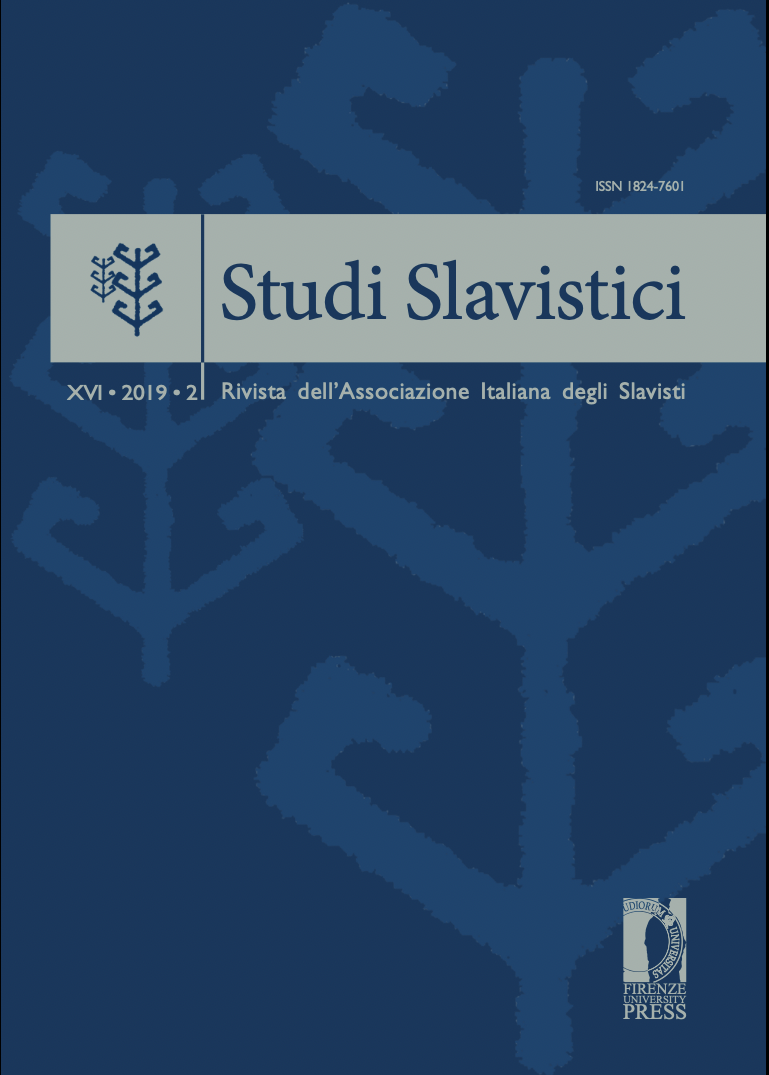Articoli
Skovoroda’s Text <em>Ubuždešsja, viděša slavu ego</em>: a Catechetical Instruction on the Liturgical Feast of the Transfiguration?
Published 2015-01-23
How to Cite
Bartolini, M. G. (2015). Skovoroda’s Text <em>Ubuždešsja, viděša slavu ego</em>: a Catechetical Instruction on the Liturgical Feast of the Transfiguration?. Studi Slavistici, 11(1), 7–22. https://doi.org/10.13128/Studi_Slavis-15338
Abstract
Skovoroda’s text Ubuždešsja, viděša slavu ego (hereafter uv) was published for the first time in 1894 in the collection of Skovoroda’s works edited by Dmytro Bahalij, who defined them as an introduction to the Catechism classes held by the writer at Kharkiv College. uv bears no date, but its graphic, morphological and phonetic features can place it between the late 1750s-early-1760s. After a comprehensive linguistic revision, uv was included in Skovoroda’s last work Dialog, imja emu Potop zmiin (1791) as its concluding section (O Preobraženii). Although uv’s rhetorical function remains open to discussion, in my article I try to demonstrate that the liturgical function of its biblical quotations suggests that it might have been conceived as a catechetical instruction (malaja instrukcija) on the liturgical feast of the Transfiguration. Furthermore, I also attempt a comparative analysis between the biblical quotations incorporated within uv and those preeminent in the Byzantine and Ruthenian sermons dedicated to the feast of the Transfiguration. What emerges from my analysis is the presence of common “quotational patterns” pointing to a shared Byzantino-Slavic tradition in the field of “sacred rhetoric”.Metrics
Metrics Loading ...


